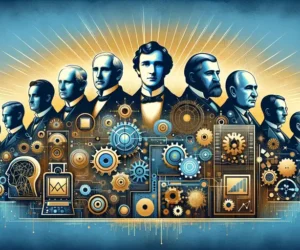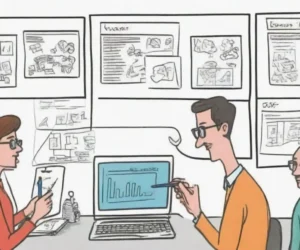
Ethics in AI Video Analysis: Challenges and Considerations Ahead

Introduction
The proliferation of artificial intelligence (AI) in various sectors has ushered in an era of unprecedented possibilities and significant ethical quandaries. One of the most impactful applications of AI lies in video analysis, encompassing everything from surveillance systems to content moderation for social media. As capability expands to analyze vast video datasets, the ethical implications become increasingly complex. The ability to identify faces, general behaviors, and even predict actions from mere video feeds has led to serious discussions surrounding privacy, bias, and accountability.
In this article, we will explore the ethical challenges and considerations associated with AI video analysis. This exploration will involve defining the ethical landscape of AI technologies in video analysis, the implications of surveillance capitalism, the role of bias in algorithmic processing, the potential for misuse in law enforcement and public security, and the landscape of policy and governance shaping these technologies. By unpacking these elements, we can better understand the pressing need for ethical frameworks and guidelines to navigate the complexities of AI as its integration deepens in our daily lives.
Understanding AI Video Analysis
Video analysis powered by AI involves using algorithms — often trained through machine learning — to interpret, assess, and derive insights from video content. This technology has rapidly evolved, allowing for everything from simple motion detection to advanced forms of facial recognition and activity prediction. One fundamental aspect of AI video analysis algorithms is computer vision, a subset of AI focused on enabling machines to interpret visual data akin to human visual perception.
A vital point of divergence in AI video analysis is its numerous applications: from traffic monitoring systems that can analyze and predict vehicular movement to social media platforms that automatically flag inappropriate content. These diverse uses emphasize how deeply embedded AI video analysis is becoming in both our personal and professional environments. However, this rapid proliferation raises serious concerns regarding ethical considerations. The data acquisition methods, for instance, can infringe upon individual privacy rights. Are we adequately informed about how our video footage might be used or analyzed? Do users understand the implications of their data being processed by AI systems?
Creating Personalized Video Recommendations with ML AlgorithmsMoreover, the advance of deep learning techniques, which enable these algorithms to learn from vast datasets, presents another layer of complexity. Deep learning can improve efficiency and accuracy but raises the question of how we ensure that such technologies do not reinforce societal biases present in the data used to train them. Understanding the implications of AI video analysis requires a comprehensive assessment of how these technologies operate, their underlying frameworks, and their impact on their subjects.
Ethical Challenges in AI Video Analysis
Privacy Concerns
One of the preeminent ethical challenges within the realm of AI video analysis is the issue of privacy. The widespread use of surveillance cameras in public spaces, particularly in urban areas, presents challenges regarding the aggregation of visual data without proper consent. Individuals often find themselves captured on camera without any knowledge of the footage being recorded, leading to concerns about potential misuse of their images. With advancements in AI, such unauthorized footage can be processed and analyzed to glean insights about individuals’ behaviors, preferences, and even predict future actions.
This raises the pressing concern of informed consent. Are individuals fully aware that their likenesses can be analytically processed in these ways? Many of the technologies that employ video analysis operate in the shadows, often running algorithms on large datasets without the explicit knowledge of those surveilled. The social contract that dictates acceptable behavior in society must also extend to AI technologies. Without a clear ethical framework in place, these technologies can readily breach the trust between individuals and institutions, undermining societal norms around privacy.
Bias and Algorithmic Fairness
Another significant ethical challenge is the potential for bias within AI systems. Algorithms are only as good as the data they are trained on. If the data ingested by these systems suffer from biases — whether they stem from racial, gender, or socioeconomic factors — these biases can manifest in the outcomes of AI video analysis tools. Research has shown that facial recognition algorithms are notably less accurate when applied to individuals from minority groups, leading to higher rates of false positives and misidentification.
A Deep Dive into Temporal Convolutional Networks for VideosThis raises critical questions about accountability. Who is responsible when an AI system fails or generates biased results? Should technologists take the blame, or is it incumbent upon the organizations deploying these solutions? Moreover, bias in algorithmic applications does not merely lead to inefficiencies; they can also have life-altering consequences for affected individuals. This consideration emphasizes the need for transparency and fairness in algorithm development and implementation processes, recognizing that inherent biases must be actively identified and mitigated in order to uphold ethical standards.
Misuse in Law Enforcement
The potential for misuse of AI video analysis technologies in law enforcement is another area fraught with ethical implications. As local and federal police agencies increasingly employ AI-driven surveillance tools, they often adopt practices that may trespass upon citizens' civil liberties. For instance, facial recognition technology can be employed preemptively, leading to a surveillance state that monitors citizens based on perceived threat levels or predictive analytics rather than actual behavioral cues.
This foreshadows a chilling effect on society as the populace becomes aware of being constantly watched. The knowledge that one is being recorded and analyzed may inhibit personal expression and freedom of movement, leading to self-censorship. Furthermore, there exists the risk that law enforcement agencies may over-rely on such technologies, leading to systemic issues such as profiling and wrongful accusations. As a society, we must engage in a rigorous discourse regarding the ethical framework and accountability mechanisms necessary to ensure that AI technologies do not inadvertently cause harm or erode public trust in law enforcement systems.
Governance and Policy Considerations

Establishing Ethical Frameworks
As the ethical discussions surrounding AI video analysis evolve, there is a pressing need to establish concrete ethical frameworks and guidelines. The development of responsible AI is paramount to ensure that technologies are harnessed for the collective good while mitigating the risks associated with privacy violations, bias, and misuse. Initiatives could include collaboration between stakeholders — including tech companies, policymakers, civil rights organizations, and academic institutions — to outline best practices and accountability measures.
Moreover, organizations implementing AI video analysis systems should adopt rigorous testing and auditing processes, ensuring that algorithms are continuously assessed for fairness, accuracy, and bias. The level of transparency in data collection methods, algorithm decision-making processes, and outcomes is crucial. Policies surrounding informed consent should also be revisited — individuals deserve the right to know how their data is being used and for what purpose.
Regulation and Policy Frameworks
In tandem with ethical frameworks, there is an increasing urgency for cohesive regulatory frameworks that target AI video analysis technologies. Various countries and regions have started to develop guidelines — such as the General Data Protection Regulation (GDPR) in the European Union — which aims to govern how personal data, including video footage, should be handled. These policies represent a foundational step towards holding organizations accountable for responsible AI deployment.
However, policymakers face challenges in keeping pace with rapidly evolving technologies. Striking a balance between innovation, public safety, and civil liberties requires meticulous attention and ongoing dialogue among regulators, technologists, and civil society. Future regulations should evolve beyond reactive measures, aiming instead to proactively foster a legal environment that promotes ethical AI usage, safeguards civil rights, and encourages responsible technological advancement.
Sentiment Analysis in Video Content: An ML Approach ExplainedConclusion
The intersection of ethics and AI video analysis is rife with intricate challenges and urgent considerations that demand our immediate attention. While the technology opens up vast potential for enhanced insights and efficiencies, it also raises fundamental concerns about privacy, bias, and accountability. Engaging in ethical dialogues surrounding these technologies is crucial, as is fostering accountability structures that transcend simple compliance.
To navigate the complexities of AI video analysis responsibly, we must construct comprehensive ethical frameworks that guide the development and deployment of these technologies. Moreover, coherent regulatory policies must be established to safeguard individual rights while encouraging innovation. By prioritizing ethical considerations alongside technological advancements, we can mitigate the risks posed by AI video analysis systems, promoting a more equitable and just society.
Ultimately, the path ahead will not be easy, but through collaborative efforts and ongoing open discourse among stakeholders, we can ensure that AI serves humanity's best interests and does not become a vehicle for further surveillance and control. The roadmap to an ethically sound AI future is arduous; however, it is a necessary pursuit that can safeguard rights, promote fairness, and foster an environment where technology elevates society rather than diminishes it.
If you want to read more articles similar to Ethics in AI Video Analysis: Challenges and Considerations Ahead, you can visit the Video Analysis category.



You Must Read